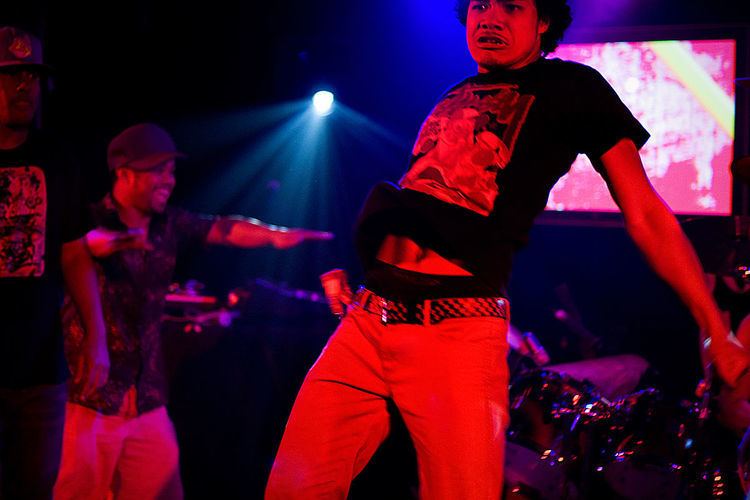 | ||
Similar Crip Walk, Robot (dance), Locking (dance) | ||
Krumping is a street dance popularized in the United States, characterized by free, expressive, exaggerated, and highly energetic movement. The youths who started krumping saw the dance as a way for them to escape gang life and "to release anger, aggression and frustration positively, in a non-violent way."
Contents
Origins
The root word "Krump" came from the lyrics of a song in the 1990s. It is sometimes spelled K.R.U.M.P., which is a backronym for Kingdom Radically Uplifted Mighty Praise, presenting krumping as a faith-based artform. Krumping was created by two dancers: Ceasare "Tight Eyez" Willis and Jo'Artis "Big Mijo" Ratti in South Central, Los Angeles during the early 2000s. Clowning is the less aggressive predecessor to krumping and was created in 1992 by Thomas "Tommy the Clown" Johnson in Compton, California. In the 1990s, Johnson and his dancers, the Hip Hop Clowns, would paint their faces and perform clowning for children at birthday parties or for the general public at other functions as a form of entertainment. In contrast, krumping focuses on highly energetic battles and dramatic movements which Tommy describes as intense, fast-paced, and sharp. CBS News has compared the intensity within krumping to what rockers experience in a mosh pit. "If movement were words, krumping would be a poetry slam." Krumping was not directly created by Tommy the Clown; however, krumping did grow out of clowning. Ceasare Willis and Jo'Artis Ratti were both originally clown dancers for Johnson but their dancing was considered too "rugged" and "raw" for clowning so they eventually broke away and developed their own style. This style is now known as krumping. Johnson eventually opened a clown dancing academy and started the Battle Zone competition at the Great Western Forum where krump crews and clown crews could come together and battle each other in front of an audience of their peers.
Spread and influence
David LaChapelle's documentary Rize explores the clowning and krumping subculture in Los Angeles. He says of the movement: "What Nirvana was to rock-and-roll in the early '90s is what these kids are to hip-hop. It's the alternative to the bling-bling, tie-in-with-a-designer corporate hip-hop thing." LaChapelle was first introduced to krump when he was directing Christina Aguilera's music video "Dirrty". After deciding to make a documentary about the dance, he started by making a short film titled Krumped. He screened this short at the 2004 Aspen Shortsfest and used the positive reaction from the film to gain more funding for a longer version. In 2005, this longer version was released as Rize and screened at the Sundance Film Festival, the Auckland International Film Festival, and several other film festivals outside the United States.
Aside from Rize, krumping has appeared in several music videos including Madonna's "Hung Up", Missy Elliott's "I'm Really Hot", The Black Eyed Peas' "Hey Mama", and Chemical Brothers "Galvanize". It is demonstrated in Skinny Puppy's "Pro-Test" video as well, which also displays several other aspects of krumping- the plot thereof being based on the call-out and battle.
The dance has also appeared in the movie Bring It On: All or Nothing, the television series Community, and the reality dance competitions So You Think You Can Dance and America's Best Dance Crew. Russell Ferguson, the winner of the sixth season of So You Think You Can Dance, is a krumper. The original web series The Legion of Extraordinary Dancers also featured krumping in season one during the fifth episode, "The Lettermakers".
Style
There are four primary moves in krump: jabs, arm swings, chest pops, and stomps. Krumping is rarely choreographed; it is almost entirely freestyle (improvisational) and is danced most frequently in battles or sessions rather than on a stage. Krumping is different stylistically from other hip-hop dance styles such as b-boying and turfing. Krumping is very aggressive and is danced upright to upbeat and fast-paced music, whereas b-boying is more acrobatic and is danced on the floor to break beats. The Oakland dance style turfing is a fusion of popping and miming that incorporates storytelling and illusion. Krumping is less precise than turfing and more freestyle. Thematically, all these dance styles share common ground including their street origins, their freestyle nature, and the use of battling. These commonalities bring them together under the umbrella of hip-hop dance.
